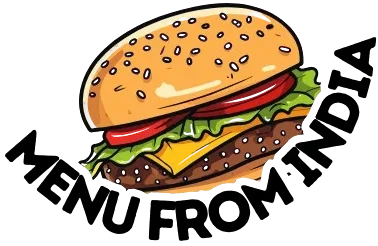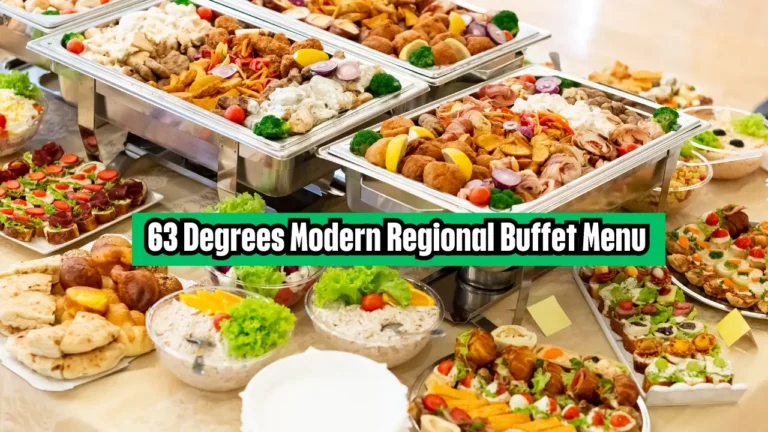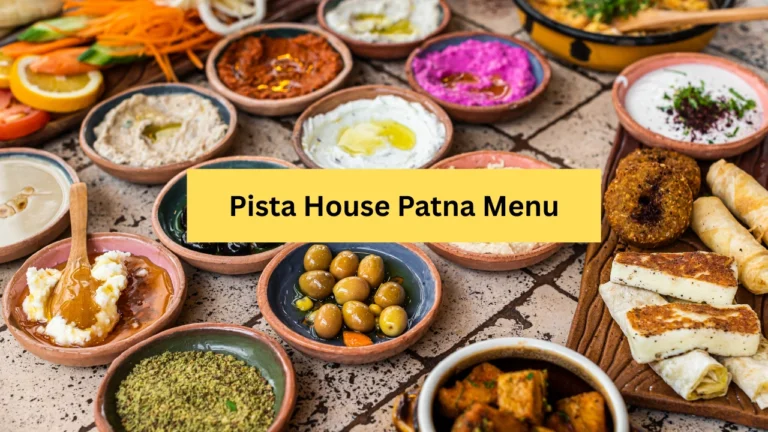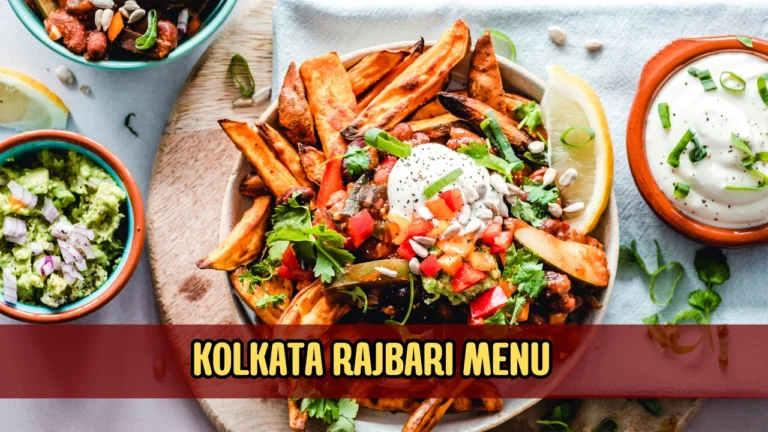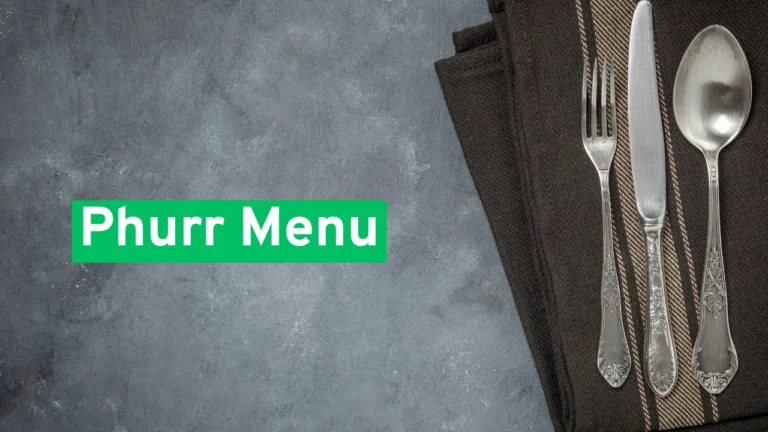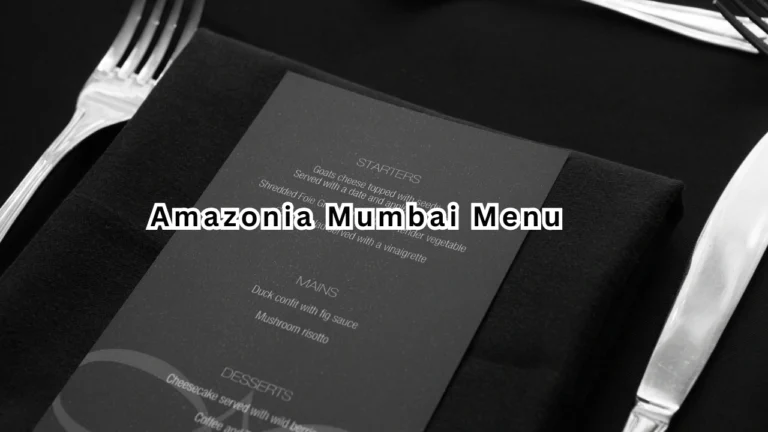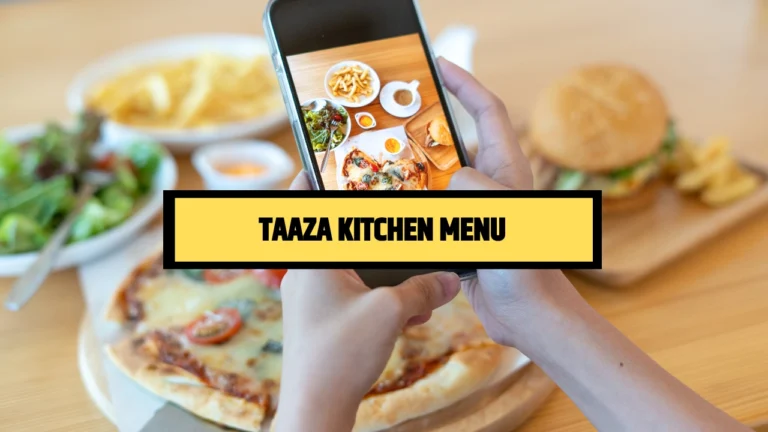Menu Card Design Attracts Customers and Boosts Sales
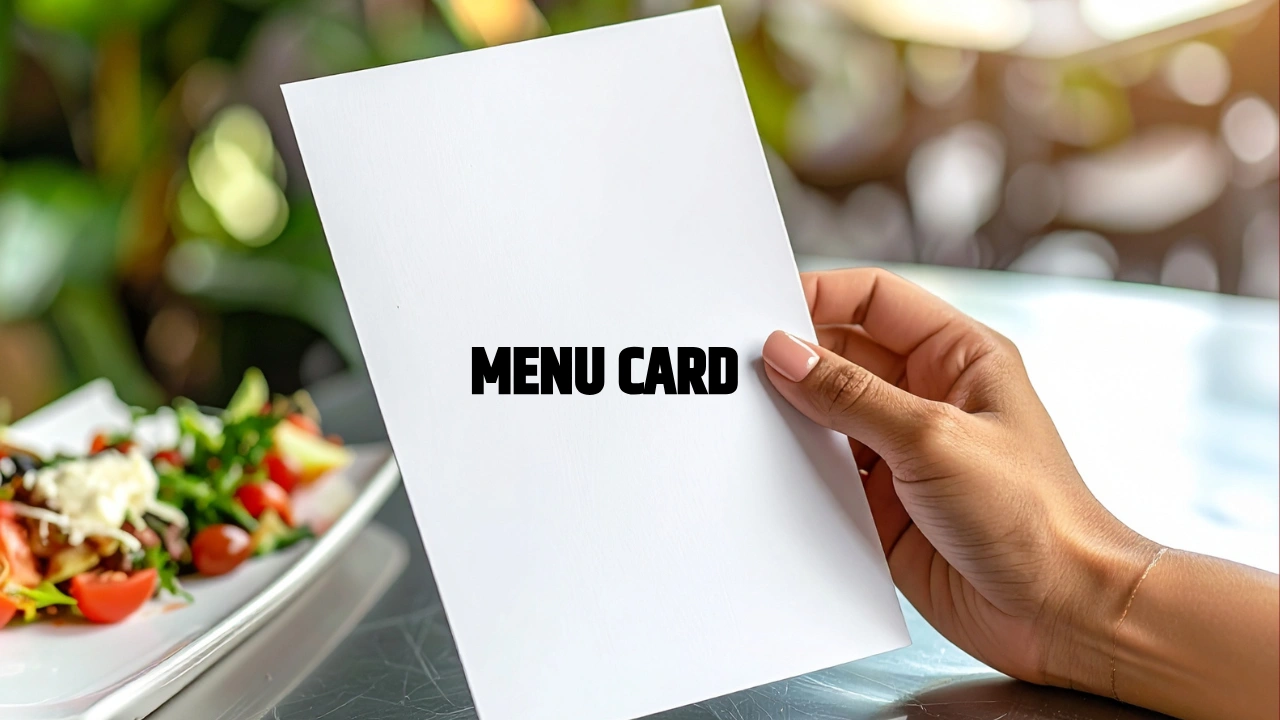
When you look at the Amazonia Mumbai Menu, the first thing that catches your eye is the design and clarity of dishes listed. This visual and informational tool you see in restaurants, cafés, or bars is called a menu card. It’s not just a sheet of paper—it’s a communication bridge between the restaurant and the customer.
A well-designed menu card plays a key role in shaping customer perception, guiding choices, and increasing sales. In today’s world of branding and digital marketing, even the smallest details in your menu design can make a big difference.
What Is a Menu Card?
A menu card is a printed or digital list of food and drink items that a restaurant offers, along with their prices and descriptions. It helps customers know what’s available and what to expect. Beyond that, a menu card is also an expression of a restaurant’s personality and brand.
It represents the cuisine, culture, and creativity of the chef. A menu card speaks for the restaurant even before a waiter arrives at your table. That’s why restaurants spend time ensuring their menu is not only informative but also attractive.
The Purpose and Power of a Menu Card
The main goal of a menu card is to inform and persuade. It must present dishes clearly while encouraging customers to try signature or premium items. The power of a menu card lies in its ability to influence decision-making in just a few seconds.
Research shows that most diners spend less than two minutes reading a menu before ordering. This means your menu design, layout, and wording must capture attention quickly. Restaurants that understand this often see increased sales and better customer satisfaction.
Key Elements of a Professional Menu Card
A professional menu card should be easy to read, visually appealing, and logically structured. Every section—from appetizers to desserts—should flow naturally. Here are some important elements that every good menu should include.
1. Clear Sections
Divide the menu into simple categories like starters, mains, desserts, and drinks. Customers can easily navigate and find what they want.
2. Attractive Descriptions
Use short, vivid descriptions. For example, instead of saying “Chicken Curry,” write “Tender chicken simmered in rich spiced gravy.” This evokes emotion and appetite.
3. Logical Pricing
Display prices clearly. Avoid cluttering the design with currency symbols. Subtle placement keeps focus on the food rather than cost.
4. Visual Appeal
The visual design should match the restaurant’s theme. A vintage restaurant might use rustic fonts, while a modern café could use minimalist layouts.
5. Highlighting Special Items
Signature dishes or chef specials should stand out. Use boxes, icons, or bold fonts to draw attention.
Table Example of Menu Card Layout
| Category | Dish Name | Description | Price (USD) |
|---|---|---|---|
| Starters | Tomato Basil Soup | Creamy soup made with fresh tomatoes and basil | 5.99 |
| Main Course | Grilled Chicken Steak | Juicy chicken served with herb butter sauce | 12.50 |
| Vegetarian | Paneer Tikka | Marinated cottage cheese grilled to perfection | 9.99 |
| Desserts | Chocolate Brownie | Soft brownie with molten chocolate center | 6.50 |
| Beverages | Iced Coffee | Chilled coffee with cream and ice | 3.99 |
This simple format keeps things organized and visually clear for the reader.
Types of Menu Cards in Restaurants
Different restaurants use different menu card types depending on their service and pricing model. Let’s explore the main ones:
À la Carte Menu Card
In this type, each dish is priced separately. It gives customers flexibility to order what they like.
Table d’hôte or Fixed Menu
Here, customers get a complete meal with several courses at a fixed price. It’s common in fine dining restaurants.
Digital Menu Card
With QR codes and websites, digital menus have become popular. They are eco-friendly and easy to update.
Seasonal or Special Menus
Some restaurants have a base menu and include seasonal additions or limited-time specials to keep offerings fresh.
Design Principles for a Perfect Menu Card
A perfect menu card combines visual appeal with functionality. It should have a clear layout, easy-to-read fonts, and balanced spacing that guides the customer’s eyes naturally. Colors and design elements must align with the restaurant’s theme to create a consistent brand experience.
Avoid clutter and use high-quality images only where necessary to highlight special dishes. Keep descriptions short, engaging, and easy to understand. When design and simplicity meet, your menu card not only looks beautiful but also drives customers to make quick, confident choices.
Digital Era and Value of Menu Cards
IIn today’s world, a menu card is no longer limited to paper—it thrives online through websites and QR codes. Digital menu cards let customers explore dishes, prices, and offers anytime, helping restaurants reach a wider audience effortlessly. They are easy to update, cost-effective, and environmentally friendly.
A well-optimized digital menu card also adds SEO value, improving a restaurant’s visibility on Google searches. When properly structured with keywords and clear descriptions, it attracts more customers searching for food options online. This modern approach blends convenience, technology, and marketing perfectly.
Saami Bhubaneswar Menu
Take the Saami Bhubaneswar Menu as an example of a well-crafted digital layout. It features clear categories, short dish descriptions, and attractive pricing. The layout is optimized for mobile viewing, making it user-friendly and SEO-efficient.
This modern approach to menu design allows customers to scroll easily and decide quickly. Restaurants using such digital menu cards benefit from both convenience and visibility on Google search.
Common Mistakes in Menu Card Design
Many restaurants make the mistake of overcrowding their menu card with too many dishes, confusing the customer. Using small fonts, poor color contrast, or unclear sections can make it hard to read and spoil the dining experience. A cluttered layout also distracts from highlighting best-selling items.
Another common issue is not updating the menu card regularly to match current prices or seasonal dishes. Inconsistent branding, spelling errors, and low-quality images can hurt a restaurant’s professional image. Keeping the design simple, accurate, and consistent helps maintain customer trust and satisfaction.
How Menu Card Design Influences Choices?
Designing a menu card is part science and part art. Colors, placement, and wording affect what customers order. For instance, red and yellow colors stimulate appetite. Items placed at the top-right corner of a page often get more attention.
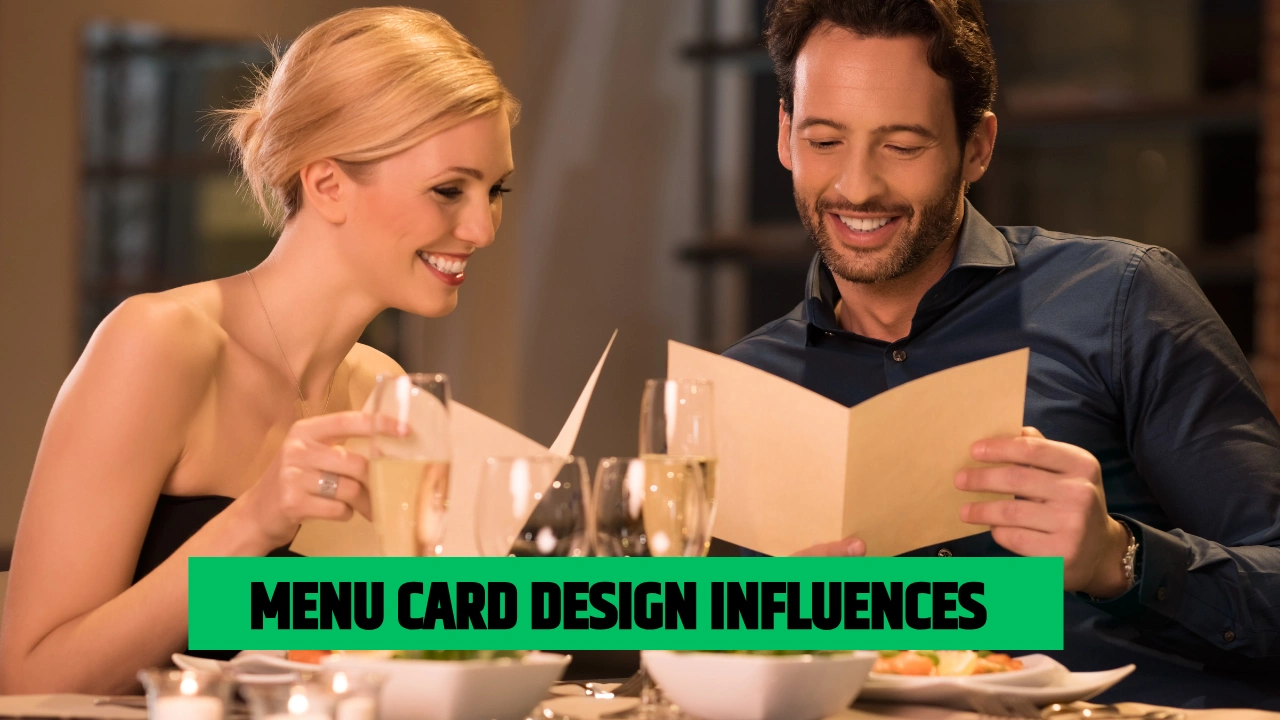
Restaurants use “menu engineering” to study which dishes are profitable and popular. Then, they highlight those strategically. Using persuasive language, removing currency symbols, and grouping items smartly can subtly guide customers toward higher-value choices.
Digital Menu Card vs. Printed Menu Card
| Feature | Digital Menu Card | Printed Menu Card |
|---|---|---|
| Accessibility | Viewable online anytime | Available only in person |
| Update Frequency | Easily updated instantly | Needs reprinting |
| Cost | Low long-term cost | Higher printing cost |
| Environment | Eco-friendly | Paper usage |
| SEO Value | Helps online visibility | No digital reach |
Many modern restaurants now combine both formats: they keep printed menus for in-house dining and digital menus for online visibility.
How to Make a Menu Card That Works?
Creating a menu card that works starts with clarity and creativity. Choose dishes that represent your brand best and describe them using simple, tempting words. Keep the design clean, readable, and visually aligned with your restaurant’s theme to attract customers easily.
Test your menu card with real customers before finalizing it to see how they respond. Make sure prices, item order, and layout feel natural. Update the menu regularly to include new dishes and remove less popular ones for a fresh and engaging experience.
The Role of Menu Card in Branding
A menu card is not just an ordering guide; it’s a reflection of your restaurant’s identity. The colors, fonts, and layout should match your brand theme, whether it’s luxury, casual, or modern. A well-designed menu strengthens trust and helps customers instantly recognize your style.
Consistency between your menu card, website, and restaurant decor creates a lasting impression. When design and presentation align, customers remember the experience beyond just the food. This emotional connection builds loyalty and turns one-time visitors into repeat guests.
Conclusion
A menu card is much more than a list of dishes—it’s a storytelling and sales tool. It shapes first impressions, drives customer choices, and reflects your restaurant’s character. Whether printed or digital, it should be clear, organized, and inviting.
From the stylish Amazonia Mumbai Menu to the modern Saami Bhubaneswar Menu, each menu tells its own story. When done right, your menu card can turn visitors into loyal customers and meals into memorable experiences.
